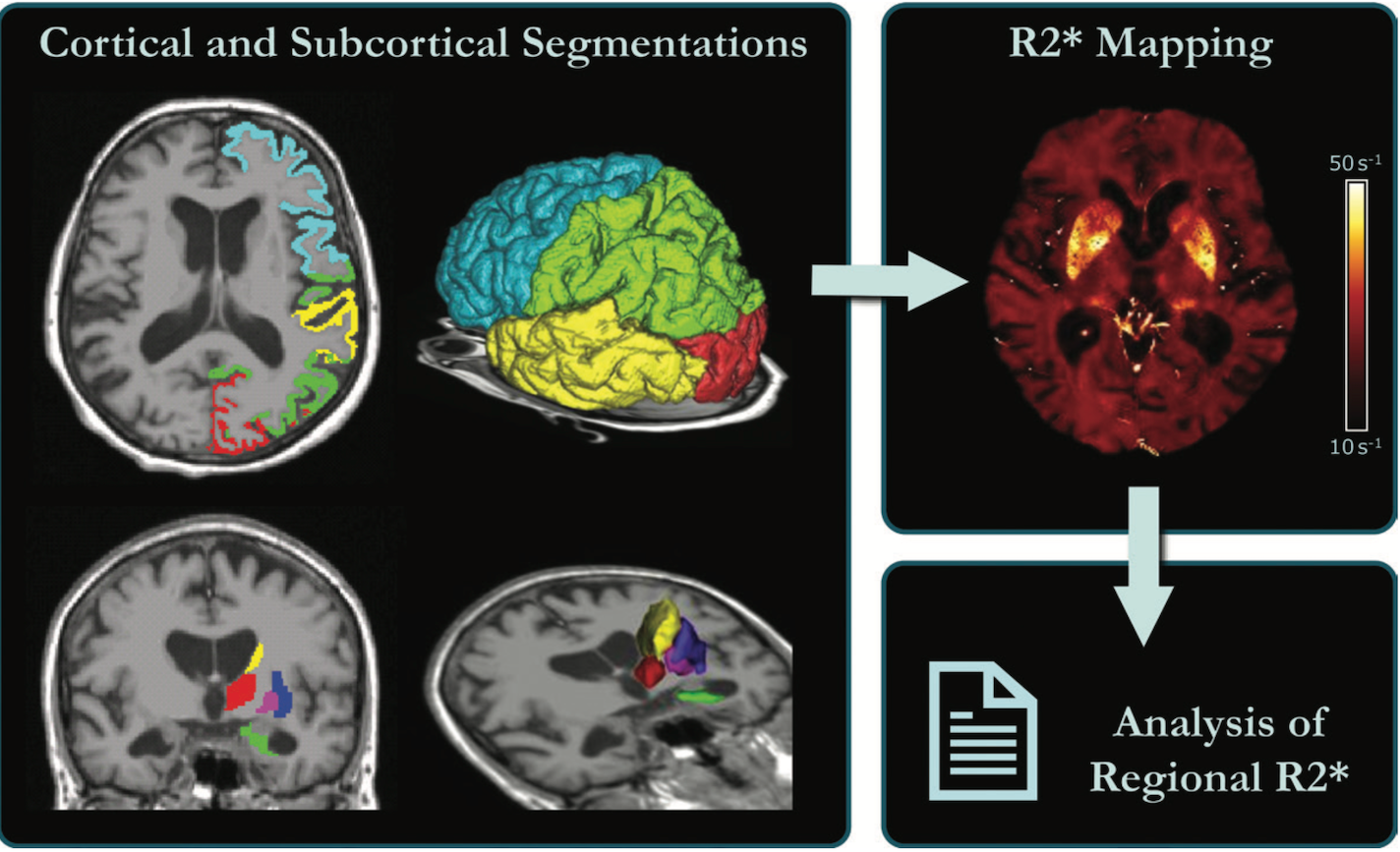Understanding The Relationship Between ADHD, Aging, And Brain Iron Levels

Table of Contents
ADHD Symptoms and Aging
Changes in ADHD Presentation Over Time
Aging and ADHD symptoms are not always easily recognized. While hyperactivity may decrease with age, inattention, forgetfulness, and difficulty with executive functions often persist and can even worsen. This shift in symptom presentation makes diagnosis in older adults challenging. The traditional markers of childhood ADHD—excessive running around and impulsivity—may be less prominent, leading to misdiagnosis or dismissal of symptoms.
- Decreased hyperactivity: Restlessness and fidgeting might be replaced by internal restlessness and difficulty staying still for extended periods.
- Increased inattention: Forgetfulness, difficulty focusing on tasks, and impaired working memory become more pronounced.
- Emotional regulation difficulties: Increased irritability, frustration, and emotional lability are common.
- Executive function deficits: Challenges with planning, organization, time management, and problem-solving intensify.
These changes highlight the importance of considering the unique presentation of ADHD in older adults when conducting a proper diagnosis. Using tools specifically designed for adult ADHD assessment is crucial to overcome diagnosis challenges.
Comorbidities and Aging
ADHD comorbidity is common, with many individuals experiencing additional mental and physical health conditions. These co-occurring conditions often become more prevalent and severe with age, further complicating ADHD symptom management.
- Depression: The overlap between ADHD and depression can make accurate diagnosis challenging. Symptoms like low mood and fatigue can be mistaken for ADHD symptoms or vice versa.
- Anxiety: Anxiety disorders are frequently co-occurring with ADHD, leading to increased stress and difficulty concentrating.
- Sleep disorders: Insomnia and other sleep disturbances are common in both ADHD and aging, exacerbating cognitive impairments and emotional regulation issues.
- Cardiovascular disease: Studies suggest a link between ADHD and an increased risk of cardiovascular issues. This risk might be amplified with age.
Recognizing and managing these ADHD comorbidities is essential for effective treatment and improved quality of life in older adults.
The Role of Brain Iron in ADHD
Iron's Importance in Brain Function
Brain iron and ADHD have a potentially significant connection. Iron plays a vital role in various brain functions, directly impacting cognitive performance. It's a crucial component in the production of neurotransmitters, including dopamine and norepinephrine, which are essential for focus, attention, and mood regulation.
- Dopamine and norepinephrine production: Iron is essential for the synthesis of these neurotransmitters, crucial for cognitive functions impacted by ADHD.
- Neuronal function: Iron is involved in energy metabolism and neuronal signaling. Imbalances can disrupt these processes.
- Synaptic plasticity: Iron plays a role in the flexibility and adaptability of synapses, affecting learning and memory.
Both iron deficiency and iron overload can negatively affect brain function, potentially contributing to ADHD symptoms.
Evidence Linking Brain Iron to ADHD Symptoms
Brain iron levels ADHD research is ongoing, employing techniques like MRI and spectroscopic methods to investigate iron concentrations in specific brain regions. While studies have shown some correlation between altered brain iron levels and ADHD symptoms, the findings are not entirely consistent.
- Studies examining brain iron levels using MRI, spectroscopic techniques: These methods provide insights into iron distribution and concentration in the brain.
- Discrepancies in findings and ongoing research: More research is needed to establish a definitive link between iron levels and ADHD symptom severity. The complexity of the condition and the variability in individual responses make definitive conclusions challenging.
Further investigation is needed to clarify the precise role of brain iron in ADHD and to develop targeted interventions based on iron status.
Aging's Impact on Iron Metabolism
Changes in Iron Absorption and Storage with Age
Aging and iron metabolism are intimately linked. Iron absorption and utilization change significantly throughout the lifespan. In older adults, decreased iron absorption from the gut can occur, leading to potential iron deficiency. Simultaneously, iron can accumulate in certain brain regions, potentially contributing to oxidative stress and neuronal damage.
- Decreased iron absorption: The efficiency of iron uptake in the gut diminishes with age.
- Potential for iron accumulation in certain brain regions: This accumulation can have detrimental effects on brain health.
- Impact of age-related diseases on iron metabolism: Conditions like diabetes and cardiovascular disease can further complicate iron metabolism.
These changes in iron metabolism can have significant implications for brain health and cognitive function in older adults.
Potential Implications for ADHD Management in Older Adults
ADHD treatment aging presents unique challenges. Age-related changes in iron metabolism may influence the effectiveness of ADHD treatments, necessitating individualized approaches.
- Medication interactions: Certain medications used to treat age-related conditions may interact with ADHD medications.
- Nutritional interventions: Dietary adjustments to support healthy iron levels may be beneficial, but require careful consideration in the context of age-related health issues.
- Need for individualized treatment plans: A holistic approach incorporating medication, lifestyle changes, and nutritional support may be optimal.
Personalized medicine ADHD approaches are crucial for effectively managing ADHD symptoms in older adults.
Conclusion
The relationship between ADHD, aging, and brain iron levels is complex and multifaceted. The presentation of ADHD changes with age, often making diagnosis challenging. Brain iron plays a crucial role in neurotransmission and cognitive function, and age-related changes in iron metabolism might further impact ADHD symptoms and treatment responses. While research is ongoing, the evidence suggests a potential interplay between these factors, underscoring the need for a more comprehensive and individualized approach to ADHD management in older adults. Understanding the relationship between ADHD, aging, and brain iron levels is crucial for effective management. Consult your doctor today to discuss your concerns and explore personalized treatment options tailored to your specific needs and age.

Featured Posts
-
 Chinas Nuclear Power Push Approval For 10 Additional Reactors
Apr 29, 2025
Chinas Nuclear Power Push Approval For 10 Additional Reactors
Apr 29, 2025 -
 Investigation Underway Car Ramming Targeting Canadian Filipinos
Apr 29, 2025
Investigation Underway Car Ramming Targeting Canadian Filipinos
Apr 29, 2025 -
 Adidas Anthony Edwards 2 A First Look At The New Signature Shoe
Apr 29, 2025
Adidas Anthony Edwards 2 A First Look At The New Signature Shoe
Apr 29, 2025 -
 Harnessing The Power Of Group Support For Living With Adhd
Apr 29, 2025
Harnessing The Power Of Group Support For Living With Adhd
Apr 29, 2025 -
 The Countrys New Business Hotspots A Geographic Analysis
Apr 29, 2025
The Countrys New Business Hotspots A Geographic Analysis
Apr 29, 2025
